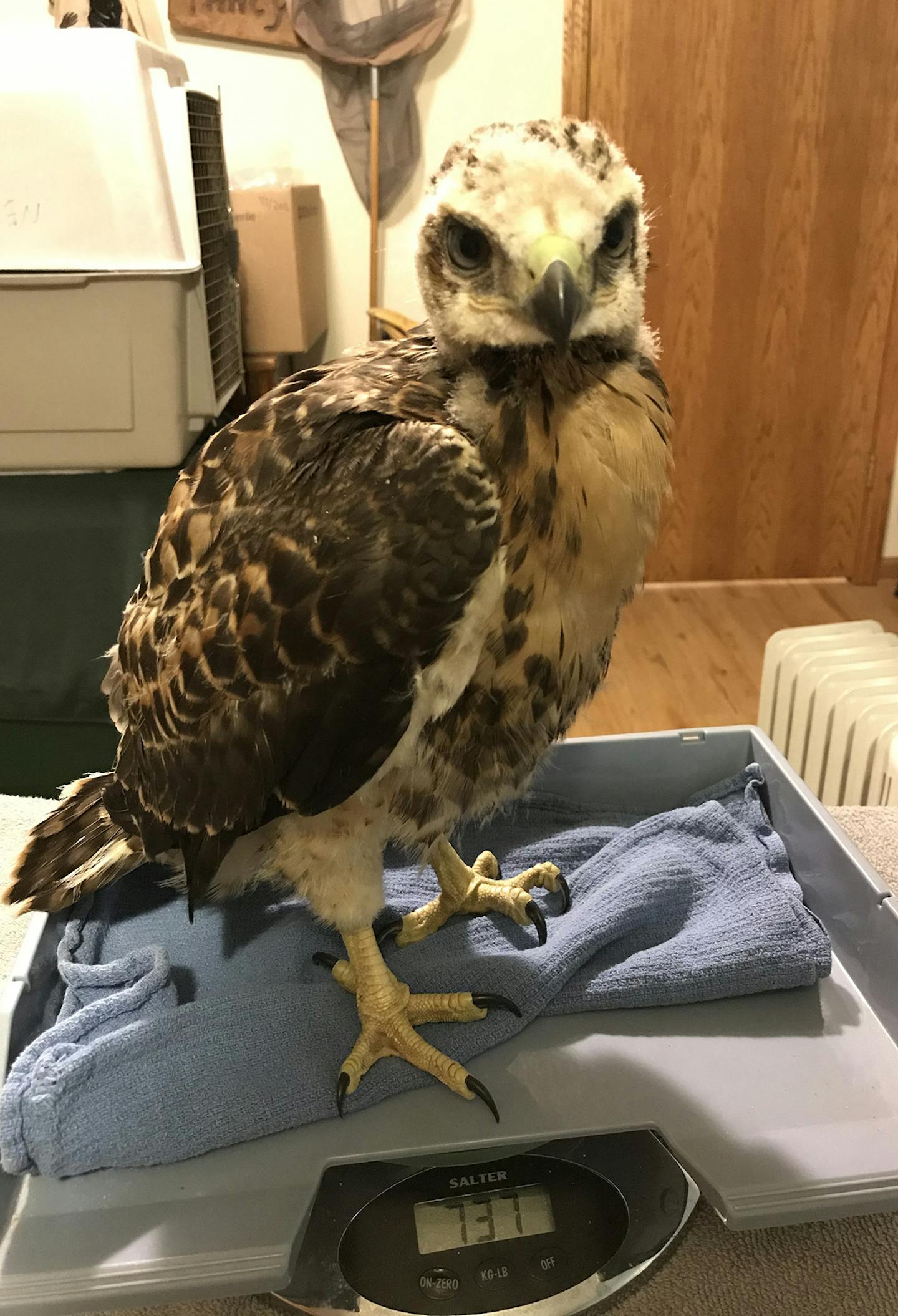If only birdies waited at every green.
Golfers Luke Herbert and Noah Kandt were putting out at the 12th green June 10 at Island View Golf Club in Waconia (where Kandt works part-time) when they noticed something unexpected. A red-tailed hawk chick was planted on the cart path to No. 13.
Their round ended abruptly, but their roles in a bird rescue were just beginning.
Herbert, the men's basketball and soccer coach at Crown College in St. Bonifacius, Minn., and Kandt, also his graduate assistant, decided to investigate. Something wasn't right with the scruffy-looking raptor, which moved awkwardly.
"[The scene was] just so out of context," Herbert said.
Kandt began making calls looking for guidance and eventually connected with the Raptor Center at the University of Minnesota, while Herbert won the trust of the bird. After 20 minutes or so, he was able to pick it up.
"It was kind of crazy," said Kandt, who said he's since learned that some club members knew of a hawk's nest near the 11th tee (and the 12th green), about 20-25 yards from where the chick was spotted.
The Raptor Center, which has long cared for sick and injured birds, directed the two to contact Gail Buhl, a longtime staffer and also an independent wildlife rehabilitator with more than 30 years' experience.
The men sent Buhl photos of the young hawk, thought to be about 6 weeks old. She decided it needed help. Herbert cradled the hawk while Kandt drove all three across the metro to Buhl's home in Roseville, serving as a rehab base of sorts because of the coronavirus pandemic-related protocol at the center. The bird was in relatively good health but needed food.
"It was a kind of a remarkable experience," Herbert said this week. "I think the comment we all made was, 'This is not how we saw the day going,' but it was pretty cool."
Buhl called the young raptor "a brancher" — a bird in preparation but not quite ready to fly, which explained why it was found struggling on the ground. Buhl said that hawk parents many times will leave food on a branch for their young to eat, a next step in educating them in independence.
Meanwhile, coincidentally, Buhl had a second worn-out raptor in need. A red-tailed hawk about the same age was found astray on the ground in a Bloomington neighborhood. The chick checked all the boxes that it needed help, too: dehydrated, underfed, no parents in sight.
Back they go
With the help of Herbert and his young family and the endorsement of Island View, Buhl decided to try to "rebranch" both hawks at the course after the juveniles were cared for together at the center's clinic. "They became fairly attached to each other, which is great," Buhl said. "That's what you want.
"We felt it was a really good bet to bring both chicks out to the golf course because we knew the adults were around," Buhl added.
On June 16, the group hit the course, chicks in tow, not looking for the nest but for the parents' territory. They settled on some trees where the young could move from branch to branch, or tree to tree, without having to attempt to fly.
Up on branches went the birds, with an assist from Herbert. The group had waited only several minutes when an adult hawk was spotted flying closely. Then a second came in, Buhl said. Within minutes, one of the adults crossed over the tree holding the chicks, and the chicks began calling for food. Buhl made sure the chicks were hungry that morning, hoping they would call out to the adults and trigger a response. They did: An adult returned to the chicks after about five minutes and landed, and more bird chatter commenced.
"That's how we pair them back up again," Buhl said.
Buhl said the apparent fostering of the second chick was a bonus, but not unexpected among raptors like red-tailed hawks. They work well in tandem caring for their young, she said, but are known to have a poor sense of smell. Plus, Buhl knew a second chick wouldn't overburden the parents, which typically produce a clutch of three eggs. Important, too, is that the chicks were close in age.
Re-establishing a chick doesn't always work, Buhl said, but she is hopeful for these two.
"Adult raptors are good parents," she said. "We can have really high success if we know the parents are around. The chance that these chicks will make it to being on their own is really high. And they're very good to have on the golf course."
Hopeful ending
Buhl said the hawks could have been on the sad side of the statistics but for the action of the golfers. The center takes in as many as 1,000 orphaned or injured hawks every year. She added that 50% to 75% of young raptors probably don't make it to their first birthday.
She said many of the cases taken on by the Raptor Center in the fall are juveniles — she called them "passage birds" because they are moving around or migrating on their own for the first time.
"They come in with lots of traumatic injuries. They get hit by cars, they hit windows. All types of things," Buhl said. "Things they are unfamiliar with because they are moving through places they've not been before. And a lot of them are starving."
All the more reason that Herbert relished the experience, and seeing it come full circle for his family to witness. Everyone learned from Buhl, he said, with high-fives and celebration at the birds' successful return.
"It was quite the experience from start to finish," he added.
Kandt was golfing Monday with a few people who knew the birds' story, when they found themselves near the spot where it all began. A hawk was spotted in flight, before it responded to needy calls rising from nearby trees.







